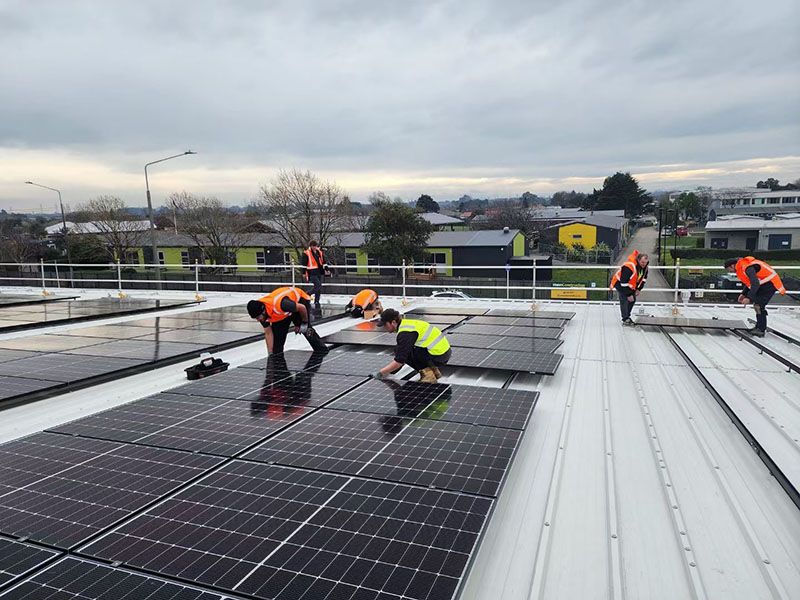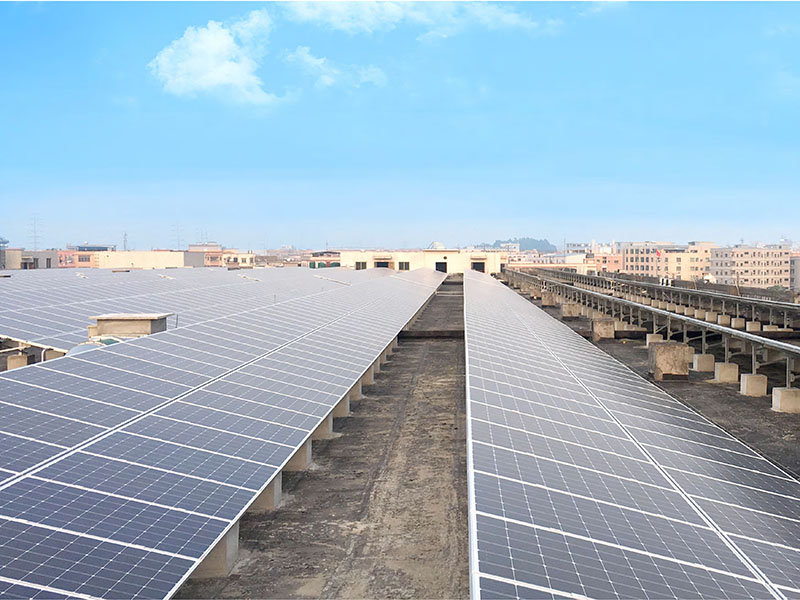The choice of material for flat roof PV bracket directly affects the stability, durability, waterproof performance and installation efficiency of the system in the following aspects: 
1. Structural Strength and Safety
Aluminum Alloy: Lightweight and corrosion-resistant, suitable for rooftop distributed photovoltaic systems (such as residential and small commercial buildings), but with lower strength, which can be compensated for by increasing the number of brackets or optimizing the design. If used on flat roofs, ensure that the slope angle is designed reasonably to avoid safety hazards during strong winds.
Galvanized steel (Q235, stainless steel): High strength, suitable for large industrial roofs or high wind pressure areas, but heavy in weight, requiring consideration of roof load-bearing capacity (0.35–0.50 kN/㎡). Hot-dip galvanizing enhances corrosion resistance, but if the galvanized layer is insufficiently thick, rusting may occur within 3–5 years.
2. Durability and maintenance costs
Corrosion resistance: Aluminum alloy treated with anodization can last up to 25 years, while galvanized steel relies on a uniform galvanized coating. If the galvanized coating does not meet standards, the steel is prone to corrosion, leading to deformation or failure of the support structure and increasing operational and maintenance costs.
Adaptability to extreme environments: In highly corrosive environments such as coastal areas or chemical industrial zones, stainless steel (such as SUS304) or aluminum-magnesium-zinc-coated steel sheets are more suitable, as they can withstand acid and alkali corrosion and extend service life.
3. Waterproofing and roof protection
Material and installation method compatibility: Aluminum profiles can be fixed using a grid-like embedded fixture system to avoid penetrating the roof and damaging the waterproofing layer; steel brackets require a cement foundation or expansion bolts and must be strictly sealed to prevent leaks.
Roof material compatibility: Color-coated steel sheet roofs require specialized clamps to prevent direct contact between rigid brackets and the roof surface, which could cause damage. For example, using stainless steel deflector plates can reduce damage to flexible waterproofing layers such as TPO membranes.
4. Economy and installation efficiency
Cost Comparison: Steel profiles cost less (about 0.2 RMB/watt), but transportation and installation complexity is higher; Aluminum profiles cost a little more, but the lightweight design reduces the logistics and construction difficulties, especially suitable for scenarios with restricted roof loads.
Installation Convenience: Aluminum alloy brackets are mostly pre-assembled modules, which are faster to install; while steel brackets need to be welded or bolted on-site, which is time-consuming.
5. Wind and snow load resistance
Material and structural design: High-strength steel (e.g., Q235B) can support larger spans (e.g., 6 meters) and adapt to areas with high wind pressure, while aluminum alloy brackets need to improve wind resistance by adding ballast (e.g., concrete piers) or optimizing tilt angle design.
Snow load limitations: Fixed supports usually have a tilt angle of no more than 20° to minimize the risk of snow build-up. Rigid structures made of steel are more suitable for high snow pressure areas, while aluminum alloys need to incorporate a drainage design to avoid water accumulation.

Summary
The choice of material should take into account the roof load, weather conditions, waterproofing needs, and economics. For example, galvanized steel is preferred for commercial roofs to balance strength and cost, while aluminum alloy is preferred for residential roofs to reduce the burden on the roof. In addition, the corrosion resistance of the material and the suitability of the installation method and roofing material together determine the long-term stability and operation and maintenance efficiency of the system.